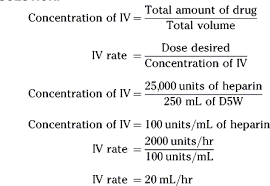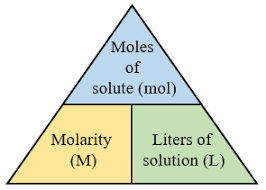|
Getting your Trinity Audio player ready... |
Pharmacy Calculations: Moles (Part 1)
Introduction to the Concept of Moles
Moles : In the field of chemistry and pharmacology, precise measurements are crucial for understanding chemical reactions and formulations. One of the most fundamental concepts in this realm is the mole, which is a unit of measurement used to express amounts of a substance. The mole serves as a bridge between the atomic and macroscopic worlds, allowing chemists to quantify the number of atoms, molecules, or ions in a given sample.
The mole operates in a similar way to the term “dozen.” For example:
- A dozen of eggs = 12 eggs
- A mole of sodium chloride = 6.022 x 10²³ molecules of sodium chloride.
The number 6.022 x 10²³ is known as Avogadro’s Number (denoted as NA), named after the Italian scientist Amadeo Avogadro. This number signifies how many atoms or molecules are present in a mole of a substance. Thus, one mole of any substance contains 6.022 x 10²³ particles, whether those particles are atoms, molecules, or ions.
What is the Mole and Its Importance?
The International Union of Pure and Applied Chemistry (IUPAC) defines the mole as the quantity of substance that contains exactly the same number of elementary entities as there are atoms in 12 grams of carbon-12. These elementary entities could be atoms, molecules, ions, or even electrons and photons. The mole is an essential tool because it enables the chemist to connect the microscopic world of individual particles with the macroscopic world that we can observe and measure.
For instance:
- One mole of sodium (Na) atoms = 6.022 x 10²³ Na atoms.
- One mole of potassium ions (K⁺) = 6.022 x 10²³ potassium ions.
- One mole of water molecules (H₂O) = 6.022 x 10²³ water molecules.
This scale of measurement makes the concept of the mole indispensable in laboratory work, drug formulation, and even the preparation of medical solutions.
The Connection Between Mass and Moles
One of the core functions of the mole concept is that it connects the mass of a substance with the number of entities (atoms, molecules, etc.) it contains. Often, pharmacists need to calculate how many molecules of a drug are present in a specific mass of that drug. For example, in a pharmaceutical setting, a question might arise:
“Is the number of molecules in 1.4 grams of ibuprofen the same as the number of molecules in 1.4 grams of mefenamic acid?”
To answer this question, we need to understand the relationship between mass, moles, and the molecular weight (Mw) of a substance. The molecular weight is the sum of the atomic weights of the atoms that make up the molecule, and it is usually expressed in grams per mole (g/mol).
The molecular weight (Mw) is critical in calculating how many moles a given mass of substance represents. Once we know the molecular weight, we can use the mole concept to determine the number of entities present in a sample.
Molecular Weight (Mw) and Its Calculation
Let’s begin by explaining how to calculate the molecular weight of a compound. The molecular weight of a molecule is the total weight of all the atoms in that molecule. For example, let’s calculate the molecular weight of mefenamic acid.
Example Calculation: Molecular Weight of Mefenamic Acid
- Chemical Formula of Mefenamic Acid: The chemical formula for mefenamic acid is C₁₅H₁₅NO₂.
- Determine the Atomic Weights of the Atoms: Use the periodic table to find the atomic weights of the elements in the formula:
- Carbon (C) = 12.01 g/mol
- Hydrogen (H) = 1.01 g/mol
- Nitrogen (N) = 14.01 g/mol
- Oxygen (O) = 16.00 g/mol
- Calculate the Molecular Weight: To find the molecular weight of mefenamic acid, sum the atomic weights of each atom, multiplied by the number of atoms in the molecule.
Mw=(15×12.01)+(15×1.01)+(1×14.01)+(2×16.00)=241.31g/mol
Thus, the molecular weight of mefenamic acid is 241.31 g/mol.
Practice Exercise: Molecular Weight of Ibuprofen
Given the chemical formula of ibuprofen (C₁₃H₁₈O₂), the molecular weight can be calculated as follows:
- Carbon (C) = 12.01 g/mol
- Hydrogen (H) = 1.01 g/mol
- Oxygen (O) = 16.00 g/mol
Mw=(13×12.01)+(18×1.01)+(2×16.00)=206.31g/mol
Thus, the molecular weight of ibuprofen is 206.31 g/mol.
Calculating Molecular Weights of Other Drugs
Here are some other drugs and their molecular weights based on their chemical formulas:
| Drug Name | Chemical Formula | Molecular Weight (g/mol) |
| Artesunate | C₁₉H₂₈O₈ | 380.42 |
| Fluoxetine | C₁₇H₁₈F₃NO | 309.33 |
| Sulfadimethoxine | C₁₂H₁₄N₄O₄S | 278.34 |
Calculating the Number of Moles
Once the molecular weight of a compound is known, we can calculate the number of moles in a given mass of that substance. The formula for calculating the number of moles is:
Number of moles(n)=Molecular Weight(Mw)Mass(m)
Where:
- nnn = number of moles (mol)
- mmm = mass (g)
- MwMwMw = molecular weight (g/mol)
Example 1: Number of Moles in 1.4 g of Ibuprofen
We already know that the molecular weight of ibuprofen is 206.31 g/mol. Using the formula:
n=206.31g/mol1.4g=0.0068mol
Thus, 1.4 grams of ibuprofen contains 0.0068 moles.
Example 2: Number of Moles in 1.4 g of Mefenamic Acid
The molecular weight of mefenamic acid is 241.31 g/mol. Using the same formula:
n=241.31g/mol1.4g=0.0058mol
Thus, 1.4 grams of mefenamic acid contains 0.0058 moles.
Calculating the Number of Molecules
Now that we know the number of moles of ibuprofen and mefenamic acid, we can determine how many molecules are present. The number of molecules in one mole of a substance is given by Avogadro’s number (NA), which is:
NA=6.022×1023molecules/mol
To find the number of molecules, we use the formula:
Number of molecules=n×NA
Where:
- nnn = number of moles
- NANANA = Avogadro’s number
Number of Molecules in Ibuprofen (1.4 g)
For ibuprofen:
Number of molecules=0.0068mol×6.022×1023molecules/mol=4.095×1021molecules
Number of Molecules in Mefenamic Acid (1.4 g)
For mefenamic acid:
Number of molecules=0.0058mol×6.022×1023molecules/mol=3.493×1021molecules
Summary of Results
To summarize, the number of molecules in 1.4 grams of ibuprofen and mefenamic acid is as follows:
| Drug Name | Mass (g) | Molecular Weight (g/mol) | Moles (mol) | Number of Molecules |
| Ibuprofen | 1.4 | 206.31 | 0.0068 | 4.095 × 10²¹ |
| Mefenamic Acid | 1.4 | 241.31 | 0.0058 | 3.493 × 10²¹ |
Answering the Question:
“Is the number of molecules in 1.4 g of ibuprofen the same as the number of molecules in 1.4 g of mefenamic acid?”
No, the number of molecules in 1.4 g of ibuprofen is greater than the number of molecules in 1.4 g of mefenamic acid. Specifically, there are 4.095 × 10²¹ molecules of ibuprofen and 3.493 × 10²¹ molecules of mefenamic acid in 1.4 grams of each.
Conclusion
Through the use of the mole concept, molecular weight, and Avogadro’s number, we are able to connect the microscopic world of atoms and molecules with the macroscopic measurements that are meaningful in practical applications like pharmacy and drug formulation. The mole concept is an essential tool in the calculation of drug doses, solutions, and formulations, ensuring accuracy in pharmaceutical practices.
















Leave a Reply